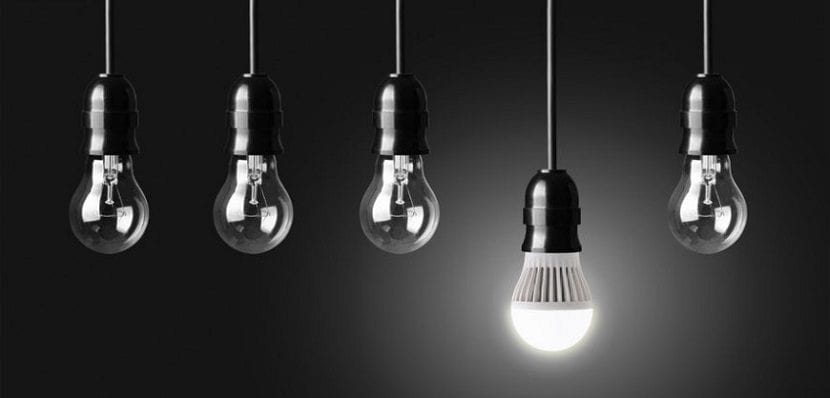
In fact, currently 18% is spent on lighting in homes and over 30% in offices of the value of our electricity bill. If we choose a type of adequate lighting for each use, we will get save between 20% and 80% energy.
To save we need to use Energy saving lightbulbs, and we classify these according to their luminosity, through the unit of measure "lumens" or "lumens”, Which indicates the amount of light emitted.
On the contrary, incandescent bulbs (the oldest) its measure was the watts (W), this indicates how much electricity consume.
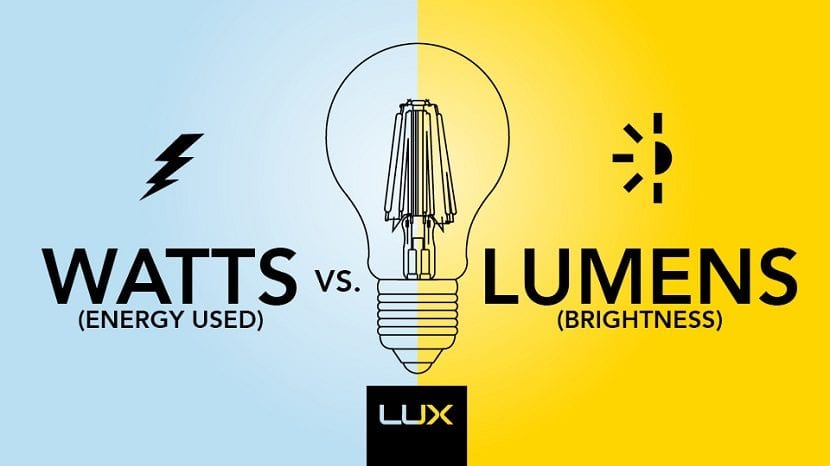
The following article tries to explain how to calculate the Lumens of the bulbs.
What is a Lumen? and how to calculate them
The first question we have to ask is to ask ourselves what are Lumens?
- The lumens, is the unit of the International System of Measurements to measure the luminous flux, a measure of the luminous power issued by the source, in this case the light bulb.
- To know the lumens that generates an LED bulb There is a formula: Real lumens = number of watts x 70, 70 being an average value that we find in most bulbs. That means, a 12W LED bulb would offer a light output of 840 lm. That more or less is what generates a 60W incandescent bulb. As you can see, by generating the same amount of light, we save 48w for each incandescent bulb that we replace.
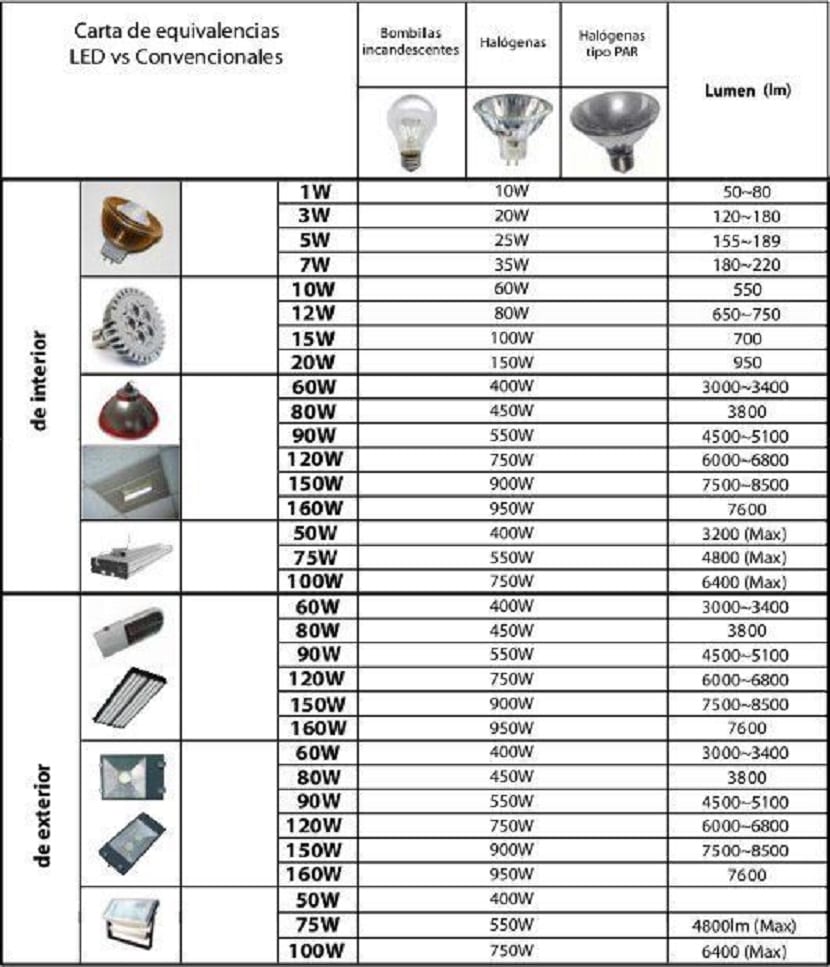
Well lit spaces
To improve the comfort of the different rooms of a house, all of them must be well lit. And it is important to know that "Well lit" means that each space must have adequate lighting: neither more nor less than the necessary. If the amount of light is insufficient, the eyes are forced to work excessively, and this leads to visual fatigue, which in turn causes symptoms such as headaches, eye irritation and stinging, heaviness in the eyelids, etc.
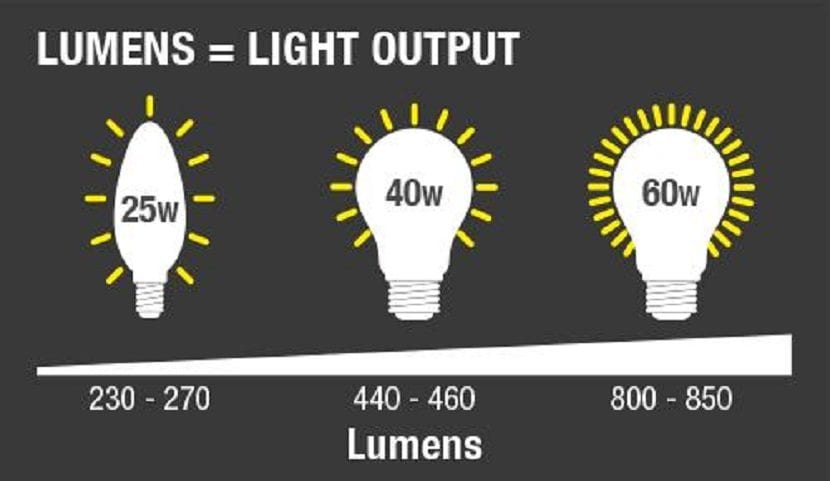
Recommended lighting for rooms in the house
Once the unit is well explained, we can try to calculate how many energy saving light bulbs are needed for a specific space, which can be any part of the house.
To know what Lighting level is recommended, we have to refer to the lux. This is one unit of intensity of illumination of the International System, of symbol lx, which is equivalent to the illumination of a surface that normally and uniformly receives a luminous flux of 1 lumen per square meter.
That means, if a room is illuminated by a light bulb 150 lumen, and the area of the room is 10 square meters, the lighting level will be 15 lx.
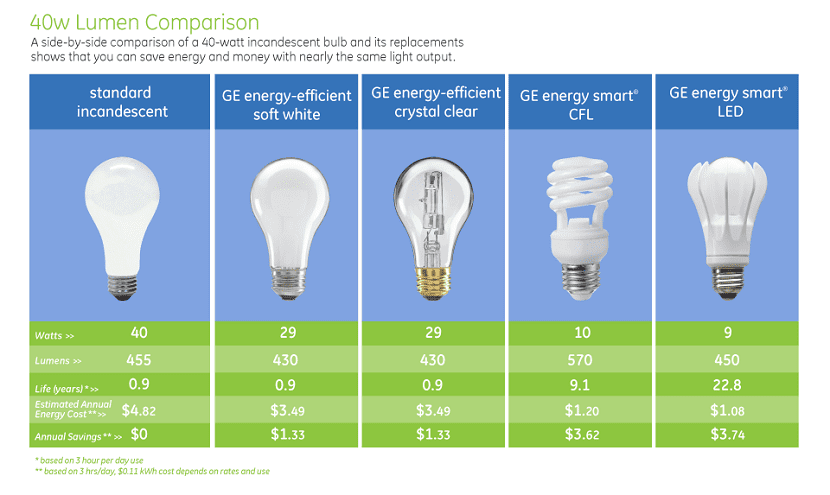
Based on this unit, there are recommended figures for the level of lighting in the home environment, depending on the needs of each space in the house:
- Kitchen: the recommendation for general lighting is between 200 and 300 lx, although for the specific work area (where food is cut and prepared) it rises up to 500 lx.
- Bedrooms: for adults, not very high levels are recommended for general lighting, between 50 and 150 lx. But at the head of the beds, especially for reading there, focused lights with up to 500 lx are recommended. In children's rooms it is recommended a little more general lighting (150 lx) and about 300 lx if there is an activity and games area.
- Living room: General lighting can vary between about 100 and 300 lx, although for watching television it is recommended that you go down to around 50 lx and for reading, as in the bedroom, an illumination focused 500 lx.
- Bathroom: you don't need too much lighting, about 100 lx is enough, except in the mirror area, for shaving, applying make-up or combing your hair: around 500 lx is also recommended there.
- Stairs, corridors and other areas of passage or little use: the ideal is a general lighting of 100 lx.
Table of Equivalences
To make it easier to change from watts to lumens, which is a relatively new thing, there is a table that makes it quite easy to quickly calculate watts to lumens (low cost bulbs):
| Values in lumens (lm) | APPROXIMATE CONSUMPTION IN WATTS (W) ACCORDING TO THE TYPE OF LAMP | |||
| LEDs | Incandescent | Halogens | CFL and fluorescent | |
| 50 / 80 | 1,3 | 10 | - - - | - - - |
| 110 / 220 | 3,5 | 15 | 10 | 5 |
| 250 / 440 | 5 | 25 | 20 | 7 |
| 550 / 650 | 9 | 40 | 35 | 9 |
| 650 / 800 | 11 | 60 | 50 | 11 |
| 800 / 1500 | 15 | 75 | 70 | 18 |
| 1600 / 1800 | 18 | 100 | 100 | 20 |
| 2500 / 2600 | 25 | 150 | 150 | 30 |
| 2600 / 2800 | 30 | 200 | 200 | 40 |
Table source: http://www.asifunciona.com/tablas/leds_equivalencias/leds_equivalencias.htm
Very well explained. Thank you